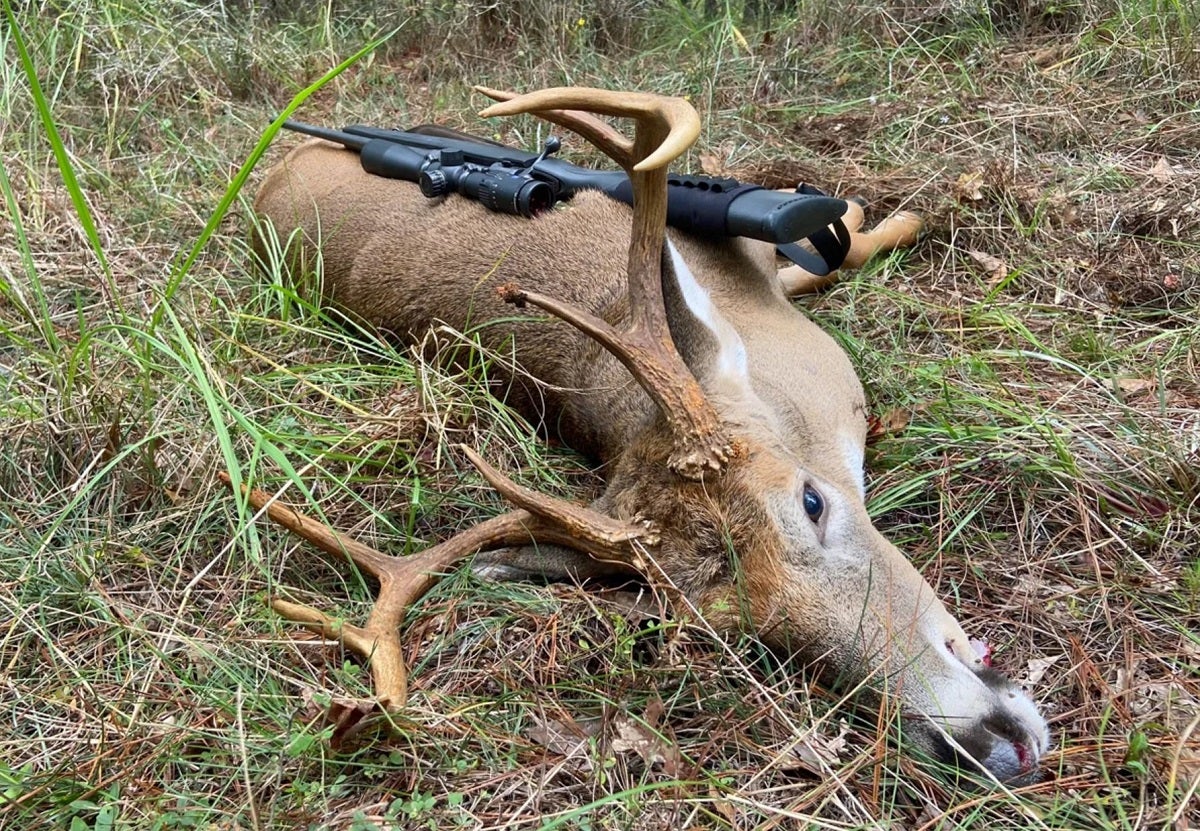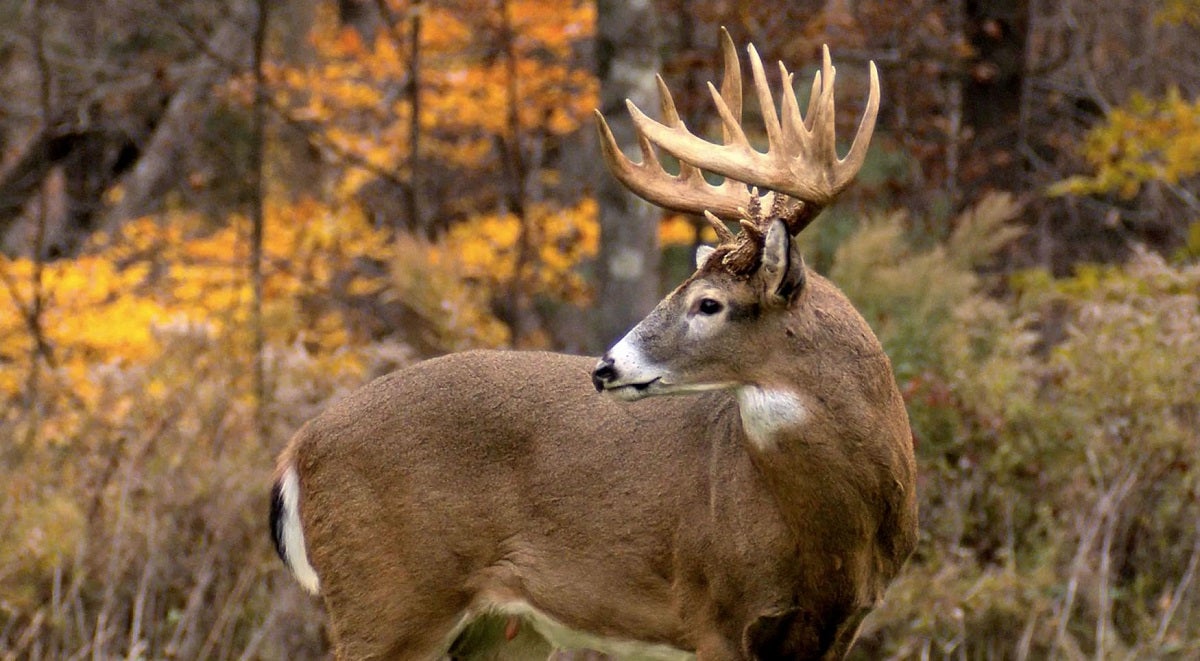Bagging Big Antlers: Tips for Hunting Elusive Bucks
Travis Olander 01.16.24

For most of us who chase deer, hunting has become more science than art. For many hunters, high-BC hand loads and specialty optics have replaced primitive tracking. Unless you’re a traditionalist who prefers hunting with a muzzleloader, chances are you’ve spent thousands of dollars on the best blinds, scents, trail cams, and camouflage. Sometimes, though, that isn’t enough. Some of us are lucky enough – and perhaps feel taunted – to hunt a plot inhabited by a big, rare, elusive buck. He’s got a pair of massive antlers, he’s old, and he probably earned a nickname like “big Joe,” or “The Ghost.” You’ve spied him once or twice at odd times and in strange weather. He doesn’t commit to the usual patterns, and it seems he’s elusive a day one of the season – no pressure’s needed to make him tough to track. Just seeing this buck, let alone having an opportunity to take a long-distance shot, might constitute a win in itself. Getting that big slab of antler field dressed and roped to the back of your quad is another story. Here are some tips on hunting big, elusive bucks.
Whitetail Deer Coverage on AllOutdoor
- Home on the Range #056: Where Have All the Whitetail Deer Gone?…
- POTD: Moultrie Mobile Edge Pro – Broken Off 9-Point Whitetail Buck
- POTD: Are your Trail Cameras Ready for the Upcoming Whitetail Rut?
- POTD: Minnesota Whitetail Buck in Hot Pursuit in the Fall Rut
Elusive Bucks – Keep The Does Close By, and Well-Fed
Elusive bucks are invariably accomplished bulls. It pays to play on an elusive buck’s mating pursuits throughout the season – which is to say you should first focus on where the does are, and then work to keep them near. I previously covered the importance of leveraging a deer’s diet to your advantage. Setting up with an attractive feed plot early in the season will draw does far and wide, potentially enticing your elusive trophy to tag along.
Late-season food plots are even more important. Mature bucks are more likely to run, change their patterns, and stay in cover as the season progresses and pressure builds. After all, pressure sensitivity is what keeps a mature buck alive through so many seasons. By keeping plots well stocked and enticing does to come back for more, you’re encouraging that cagey buck to keep closer, especially as the second rut approaches.
But throwing up a feeder in any old field and filling it with random granules won’t do. The deer’s diet changes throughout the season, so your feed should reflect a natural, progressing, seasonal diet. It also pays dividends to set up your plot where natural browse and forbs – which make up more than half a deer’s diet each year – are already aplenty. Mature bucks are fickle, and might avoid an out-of-the-way or poorly planned plot that otherwise attracts less discerning deer.
Elusive Bucks – Hunt The Second Rut
Most hunters pounce on the opening rut, introducing pressure and effectively shutting the window on bagging big antlers after a short period of time. But if you follow the does’ mating patterns and take advantage of the second rut, you’re far more likely to find success. Unbred does enter a second estrus period 28 days after the peak of the first rut. It’s here that, by following does in heat, you might get your chance at taking your oft shy trophy.
Elusive Bucks – Hide in Plain Sight
Mature bucks are just as adept at patterning humans as we are at tracking their movements. That’s to say the high-pointer you’re tracking can easily recognize the sound of a side-by-side or ATV – and he’s smart enough to know that camouflage and the shot of a rifle aren’t far behind. Deer are also desensitized to regular human activity, and it’s absolutely true that they’re intelligent enough to tell the difference between passenger vehicles and passersby, and hunters looking to take a shot.
If you’re scouting property or setting up a plot and have the means, do it in a pickup truck instead of the four-wheeler. Do it at a time when most hunters wouldn’t otherwise be in the field. Midday during the week works, if you can swing it. The same holds true for when you’re setting up trail cameras. Make some noise and pattern yourself to nearby bucks in a way that advertises you’re just working the land, and you’re definitely not a hunter.
Elusive Bucks – Find Where Bucks Bed Down
Mature bucks vary their patterns and range, but they tend to stick to a common bedding area. This is one of the first things you should figure out, and there’s no better way to do it than with plenty of trail cams. Once you’ve got a rough idea of its territory and range, using half a dozen or more cameras spread across at least 1 to 3 miles – the average distance a buck may travel daily from his bed – is a surefire way to develop a buck’s pattern, including when, how, and where, exactly he enters and exits his bedding area.
Elusive Bucks – Stick To The Fringes
Mature deer like to bed in heavy timber, and they’ll rarely cross open areas. In fact, all deer prefer thick cover. Most of your tracking and spotting should take place along the fringes – shady edges of groves, hardwood clusters, and bushy brambles. Bucks will typically run along the sides of woody thickets to check scents, especially during ruts. It’s here you’re most likely to pick up a trail of prints.
Elusive Bucks – Embrace the (Bad) Weather
A proper snow storm could be prime time for bagging a buck. A good squall can mask your movements and provide a huge advantage when it comes to mitigating a deer’s sense of hearing, smell, and vision. Although deer typically bed in a storm, hard glassing and lots of patience can bring an opportunity to shoot – and it should go without saying that fresh snow makes tracking and checking for sign incredibly easy. Deer are also quite good at forecasting the weather. They’re more likely to be active before a storm, foraging and getting in as much nutrition as possible before everything gets blanketed. If a storm’s on the horizon, it might high time to hunt.
Elusive Bucks – Learn a Buck’s Routine, Take Notes
The buck that lives through season after season is one that doesn’t stick to an obvious routine. But, with regular plotting, scouting, and note-taking – and perhaps with plenty of help from frequently checked trail cams – you can start to piece together any sporadic patterns and movements that could improve your chances or, at the very least, help you to focus in on some narrower territory.
Elusive Bucks – Hunt at Lunch
This is complementary to the last tip, and it’s something that most hunters simply don’t bother with: Take to the midday, when there are fewer rifles on the ground and less pressure and expectation on a buck’s mind. Lunchtime hours can afford some of the best opportunities to take some shots at a trophy, when most folks are working or predisposed. When the sun’s high, bucks are likely to be on the move and looking for a receptive doe during the ruts. So, grab the lunchbox and bring it with you to the blind or stand. Sit all day, if you have the time. Looking for the right kit to set up a feed plot? Check out Moultrie’s new Ranch Series feeders. They’re perfect for managing herds and game alike. If you’re tracking far and wide, it might also be a smart investment to consider an ultralight rifle, like Savage’s new Model 110 Ultralite Elite.




